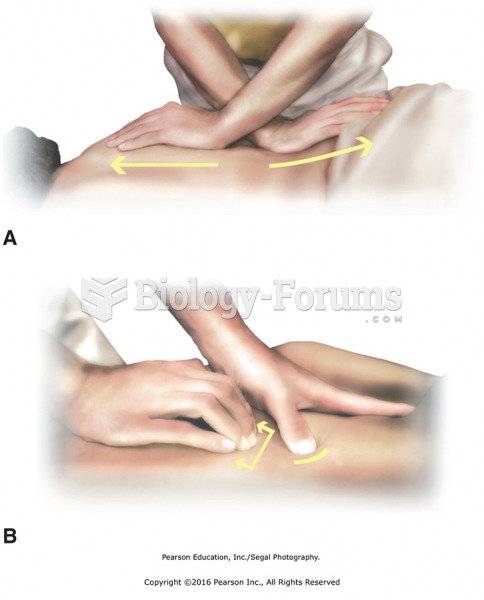|
|
|
Since 1988, the CDC has reported a 99% reduction in bacterial meningitis caused by Haemophilus influenzae, due to the introduction of the vaccine against it.
After a vasectomy, it takes about 12 ejaculations to clear out sperm that were already beyond the blocked area.
In the ancient and medieval periods, dysentery killed about ? of all babies before they reach 12 months of age. The disease was transferred through contaminated drinking water, because there was no way to adequately dispose of sewage, which contaminated the water.
About 600,000 particles of skin are shed every hour by each human. If you live to age 70 years, you have shed 105 pounds of dead skin.
To combat osteoporosis, changes in lifestyle and diet are recommended. At-risk patients should include 1,200 to 1,500 mg of calcium daily either via dietary means or with supplements.
 On some engines, it is necessary to watch the direction the rotor is pointing to help determine how ...
On some engines, it is necessary to watch the direction the rotor is pointing to help determine how ...
 Fascial stretching techniques. (A) Cross-hand dual direction stretch. (B) Pin and stretch with the ...
Fascial stretching techniques. (A) Cross-hand dual direction stretch. (B) Pin and stretch with the ...





